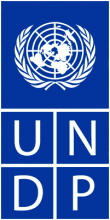Resource information
One United Nations Plaza,
New York, NY, 10017, USA
All rights reserved
Copyright © 2011 United Nations Convention to Combat Desertification, UNCCD Secretariat,
P.O. Box 260129, D-53153 Bonn, Germany
All rights reserved
As the world reviews its progress in tackling global poverty and achieving the Millennium Development Goals (MDGs), drylands can no longer be ignored. Drylands account for more than a third of the world’s land surface and more than 2 billion of its people. Yet for too long, drylands and their inhabitants have been neglected in development processes.
Drylands face indisputable development challenges, including limited water resources, relatively low biological productivity, and a history of political and economic exclusion. Traditional gender inequalities and conflict situations exacerbate these challenges. However, drylands also possess valuable assets, such as their unique natural resources, diverse cultures and resilient communities. Despite these assets, dryland populations — particularly in rural areas — include the poorest, hungriest, least healthy and most marginalized people in the world.
Identifying and understanding the multidimensional characteristics of poverty in drylands is the first step towards reversing their neglect. The association between drylands and poverty can be analysed at various scales, from the global to the subnational. A careful parsing of the evidence contained in the MDG Country Reports, several of which were developed with support from the United Nations Development Programme (UNDP), reveals that physical characteristics are just one of many factors that lead to spatial disparities in welfare. Socioeconomic, political, and historical drivers also contribute to pockets of poverty.
The MDG Country Reports — and UNDP’s synthesis of the evidence contained in those reports — provide a window on the common challenges and bottlenecks that constrain development. While many of these issues are common to dryland and non-dryland areas alike, particular combinations of sociocultural, economic, climatic and institutional challenges are dryland-specific. The progress in many countries, particularly the ‘BRIC’ 1 countries of Brazil, India and China, illustrates how these challenges can be surmounted. As documented in the MDG Country Reports and elsewhere, there have been impressive, if isolated, successes in combating poverty in the drylands.
Unlocking the potential of the world’s drylands requires the participatory development and implementation of an integrated strategy to enhance the well-being of dryland communities, build their capacity to adapt to environmental uncertainty, and protect critical dryland ecosystem services. This strategy will require an upgraded knowledge base so policy makers can better understand dryland challenges and opportunities and apply that understanding to improved governance structures. It should also accurately account for the economic value of dryland ecosystem services; promote sustainable public and private investment in drylands; and support institutional changes that strengthen natural resource rights, reform inequitable patterns of distribution and increase human and ecologic resiliency.
The United Nations Convention to Combat Desertification (UNCCD) represents the international community’s commitment to improve living conditions in developing country drylands. Its dual focus on the environment and development position it as a unique mechanism to facilitate MDG achievement in the world’s drylands. The UNCCD legitimizes the mainstreaming of dryland concerns into broader poverty reduction efforts, recognizing that policies proven in dryland contexts can often be applied successfully in non-dryland contexts.
Policies aimed at dryland challenges should reflect five broad conditions for success, drawn from the MDG Country Reports. First, development strategies should be country-led and supported through effective governance that incorporates the needs of dryland populations through participatory processes. Second, economic growth must be inclusive and pro-poor, with agricultural growth strategies that maximize the comparative advantage of particular areas. Third, service delivery in drylands must be improved. Public investment in health, education and basic services is critical to improving living conditions in line with the MDGs. Fourth, targeted social assistance and public employment programmes should efficiently focus benefits on the geographic areas where they are most needed. Finally, development agendas must be fully integrated with programmes that both respond to the vulnerabilities associated with climate change and recognize that drylands provide opportunities to address climate change through services such as carbon sequestration and renewable energy generation.
Dryland-focused policy options must be incorporated into national development agendas if they are to have a significant and pervasive impact on poverty levels. Extending the benefits of MDG advances to drylands requires a recognition in both policy and practice that just as drylands are integral to the social, economic and ecological fabric of a country and region, so too must be the responses to their challenges and opportunities.



